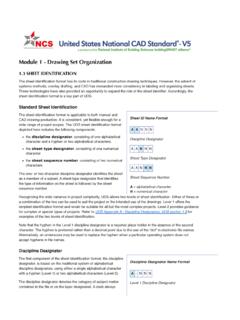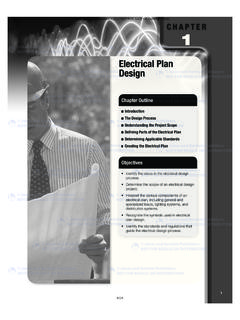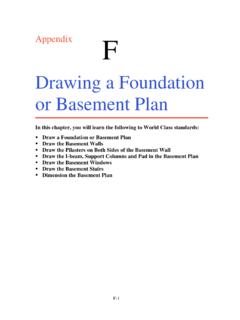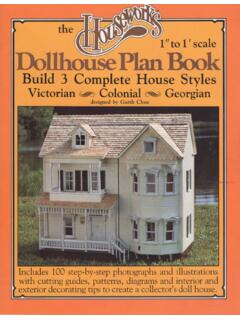Transcription of Unit Plan: 2nd Grade Social Studies
1 P a g e | 1 Effective Instructional Design Unit plan Second Grade Social Studies Exploring Maps: Community Katherine Schwarzkopf EDI 430 Fall, 2014 P a g e | 2 Second Grade Social Studies Unit Table of Contents Page 3 .. Introduction Page 3 .. Goals Page 3 .. Grade Level/ Curriculum Standards Page 3-4 .. Instructional Objectives/ Targets Page 4 .. Unit Sequence Page 4 .. Unit Time Span Page 4 .. Bloom s Chart Page 5 .. Learning Styles and Accommodations Page 5 .. Hands-on Learning Page 5 .. Content Area Integration Page 5 .. Global/ Multicultural Page 5 .. Technology Page 5.
2 Affective Domain Page 6 .. Classroom Setup Page 6 .. Final Assessment Page 6 .. Pre-assessment Page 7 .. Lesson 1: Exploring Maps Introductory lesson Page 18 .. Lesson 2: Using Direction Words to Locate Items on a Map Page 29 .. Lesson 3: Where is Our Community? Page 39 .. Lesson 4: Exploring a Map of Our Local Community Page 48 .. Lesson 5: Making a Map of Our Local Community Page 55 .. Culminating Lesson Page 56 .. Assessments/ Scoring Guides Page 60 .. Student Reflection Form for Unit Page 62 .. Reflection of Student Responses on Reflection Form for Unit Page 63 .. Bibliography Page 64 .. Teacher Reflective Evaluation of Unit P a g e | 3 Introduction: This unit was written for second Grade students at Palmer Elementary in the Grand Rapids Public School District.
3 Through a series of five lessons, students analyze, compare/ contrast, use, and create maps. The unit goals and objectives are based on Common Core State Standards. This unit about community and maps will allow students to locate their own community of Grand Rapids on different maps. This unit is designed to teach 2nd Grade students about different characteristics of maps that help people locate certain places. This includes a map s title, map key, directions on a map, etc. Goals: 1. Students will be able to identify characteristics of different types of maps. 2. Students will be able to locate our community on several different maps. 3. Students will use directions to describe the location of certain objects/ places on a map.
4 4. Students will create their own map of our community using the appropriate characteristics of that type of map. Grade Level/ Curriculum Standards: 2 - : Use maps to describe the spatial organization of the local community by applying concepts including relative location and using distance, direction, and scale. 2 - : Describe how the local community is part of a larger region ( , county. metropolitan area, state. 2 - : Describe land use in the community ( , where people live, where services are provided, where products are made). 2 - : Construct maps of the local community that contain symbols, labels, and legends denoting human and natural resources.)
5 Instructional Objectives/ Targets: Lesson 1: I can describe a map as a drawing that shows what a place looks like from above. I can identify characteristics of a map, such as title, key, and directions. Lesson 2: I can locate specific things on different maps. I can tell where specific places are on a map using direction words. Lesson 3: I can locate my community on a map. I can use direction words like near , close to , and between to describe where a community is located. P a g e | 4 Lesson 4: I can describe different aspects of community such as the places where people work, play, live, and shop. I can identify these different places on a map of my community.
6 I can identify natural and human resources on a map of my community. Lesson 5: I can create a map of my community that shows important characteristics. Unit Sequence: Lesson 1: Exploring Maps Lesson 2: Using direction words to locate items on a map Lesson 3: Where is our community? Lesson 4: Exploring a map of our local community Lesson 5: Making a map of our local community Unit Time Span: Wednesday Thursday Friday Week 1 Lesson 1 Lesson 2 Lesson 3 Week 2 Lesson 4 Lesson 5 Bloom s Chart: Each lesson in this unit requires students to display higher level thinking. The following chart indicates the thinking levels evident in each of the lessons within this unit.
7 Remember Understand Apply Analyze Evaluate Create Lesson 1 X X X X Lesson 2 X X X Lesson 3 X X Lesson 4 X X X X X Lesson 5 X X X X P a g e | 5 Learning Styles and Accommodations: Each lesson within this unit has accommodations written into them. Accommodations have been added in each lesson for struggling students as well as highly motivated students. The learning styles of students are accommodated through a variety of teaching styles, strategies, and techniques. Hands-on Learning: Throughout this unit, students will be involved in hands-on activities to assist their learning. These activities include creation of a map key, a relative direction scavenger hunt, a foldable book / art project, and the creation of a map.
8 Content Area Integration: This unit will incorporate other content areas into instruction. These include; mathematics and English language arts. Mathematics will be incorporated as students are introduced to the concept of scale. Additionally, students will collaborate with others to work on their speaking and listening skills which is part of the Common Core State Standards for English language arts. Integrated CCSS: : Participate in collaborative conversations with diverse partners about Grade 2 topics and texts with peers and adults. : Follow agreed-upon rules for discussion ( , gaining the floor in respectful ways, listening to others with care, speaking one at a time about the topics and texts under discussion).
9 Global/ Multicultural: The content learned from this unit is important and can be applied throughout student s daily lives. This includes skills such as analyzing and reading a map correctly. Additionally, students will learn how to give directions. These are skills and concepts that are sure to follow students throughout their lifetime. Technology: Technology will be incorporated throughout this unit. The teacher will display and model concepts through the use of a document camera. In addition, students will use a classroom microphone to project their voices as they share their ideas and work with the class. Affective Domain: The teacher will maintain a safe and comfortable environment for students.
10 Students will participate in whole class, group, paired, and individual activities. During each of these activities, students will receive positive feedback from the teacher as well as their peers. Students will be encouraged to help one another throughout this unit as they participate in each kind of activity. Students will be given the classroom microphone to share student work. This will aid not only in projecting the student s voice, but also letting the students know that their work is valued. P a g e | 6 Classroom Setup: Various maps will be displayed in the classroom throughout this unit. Student maps will also be displayed around the room or on the class bulletin board at the conclusion of the unit.








